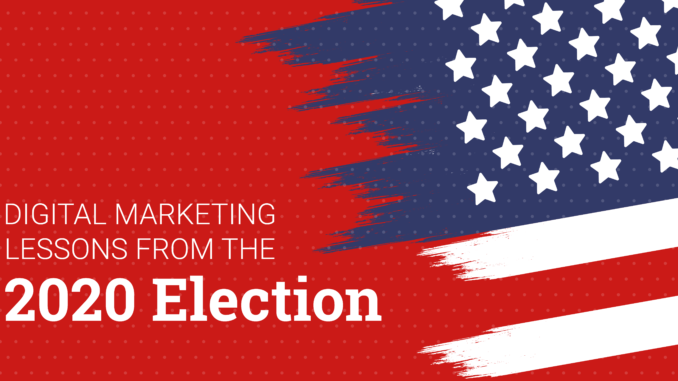
Analysis of this election, like all others, will go on for years. Talking heads will discuss demographic changes, voter preferences, GOTV initiatives, and other “X factor” events endlessly right up until the point that it’s time to start the whole process all over again. In fact, Trump hasn’t even conceded and we’re already hearing rumblings about the 2024 election.
With that in mind, we don’t have the expertise to get into the political side of things. What we can do is note that there were a few interesting parallels between the way vote totals were reported and the approach organization leaders and teams look at digital marketing. Specifically, there was one lesson that was demonstrated again and again: it’s important to give data time to develop.
Whether you are trying to persuade a county full of suburban residents to cast a ballot your way or looking to pull people from search engines and social media sites on to your landing pages, more information means better decisions. To give you a better sense of what we mean, let’s dig a little bit deeper into our advice.
Don’t Change Campaigns and Creative Elements Too Soon
One of the peculiarities of this election was the huge increase in mailed ballots. Depending on which state you were paying attention to, you might have seen early totals that represented only mailed ballots in some areas while others reported none at all. That discrepancy skewed the early returns in unpredictable ways. Consider Pennsylvania where mail-in ballots didn’t get processed until Election Day versus Minnesota, where ballots were processed upon receipt.
We see the same thing happen all the time, particularly with new online advertising campaigns. For various reasons, it often happens that the initial response rates can be significantly higher or lower than expected. It takes time for real baseline numbers to emerge.
On top of that, if you make updates to your Google Ads campaigns right away, your campaigns are most likely still in the “” phase.
One of our clients recently started second-guessing a landing page based on initial Google Analytics data. As we looked into the data further, we found that most of their traffic that didn’t convert was internal.
If you make big decisions based on those early indications, you might end up wasting money or missing out on bigger opportunities. That’s why it’s important to wait a bit before changing directions, increasing budgets, or taking other steps.
Look for Small Trend Shifts That Add Up Over Time
Early indications suggest that this year’s elections shifted on very small changes in voter behavior that were specific to a handful of demographic groups. They didn’t seem like much in the aggregate, but moving one out of every ten people of a certain group from one category to another, or getting large groups, like individuals under 30, who might normally not cast a ballot to vote, may have been enough to tilt the balance of power.
There is another powerful lesson for digital marketers here. We often tend to think of things happening very rapidly in business, and particularly on the internet. More often than not, though, the most significant trends develop slowly. Maybe customers aren’t responding to a certain type of ad or offer anymore, or they are flocking to one social site instead of another. You can spot these changes, react to them, and even get ahead of your competitors, but only if you’re paying attention. Look at Facebook’s shift in demographics. This didn’t happen overnight. There was plenty of time to adjust your strategy.
In the same way that you don’t want to overreact to new information in the short-term, neither should you ignore bigger trends that develop gradually – even if they aren’t affecting you in a major way at first.
Make Decisions Based on Data Rather Than Emotion
As votes were being tallied, news outlets showed analysts on both sides of the spectrum arguing over what the results would ultimately mean. Given that everyone was seeing the same vote totals, how could there be so much disagreement?
It’s no secret that most of us tend to see what we want or expect to see in any given situation. That’s just human nature. While you might not be able to stop yourself from doing it at times, you can be conscious of this trap and do your best to avoid it. That means not assuming customers will respond to a certain type of content, or that your messaging is working if conversions are happening.
When looking at digital marketing results with your web team, avoid the temptation to draw conclusions that fit your existing preferences or assumptions. Let the numbers tell you the truth and then follow their lead rather than trying to shape them into a direction that makes you feel more comfortable. Better yet, look at the numbers and data visualizations showing how users interact with your website and content.
Want Customers to Choose Your Organization Again and Again?
Running an organization isn’t quite like an election outcome of course, but there are certainly disciplines – especially when it comes to digital marketing – where the two overlap. For more helpful digital marketing resources, check back to our blog soon. Or, if you know you’re ready to take your digital marketing campaigns to the next level, contact us today to schedule a free consultation.

Leave a Reply